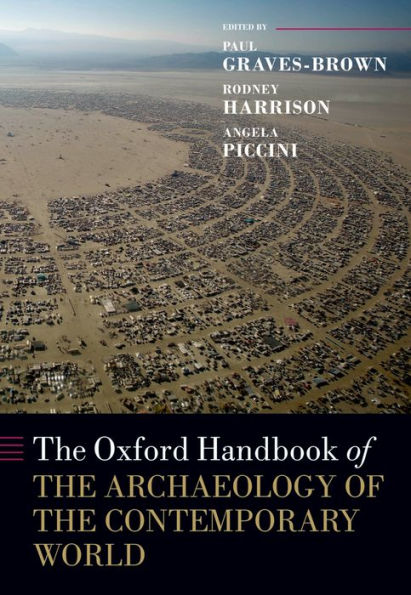The Oxford Handbook of the Archaeology of the Contemporary World
It has been clear for many years that the ways in which archaeology is practised have been a direct product of a particular set of social, cultural, and historical circumstances - archaeology is always carried out in the present. More recently, however, many have begun to consider how archaeological techniques might be used to reflect more directly on the contemporary world itself: how we might undertake archaeologies of, as well as in the present. This Handbook is the first comprehensive survey of an exciting and rapidly expanding sub-field and provides an authoritative overview of the newly emerging focus on the archaeology of the present and recent past. In addition to detailed archaeological case studies, it includes essays by scholars working on the relationships of different disciplines to the archaeology of the contemporary world, including anthropology, psychology, philosophy, historical geography, science and technology studies, communications and media, ethnoarchaeology, forensic archaeology, sociology, film, performance, and contemporary art. This volume seeks to explore the boundaries of an emerging sub-discipline, to develop a tool-kit of concepts and methods which are applicable to this new field, and to suggest important future trajectories for research. It makes a significant intervention by drawing together scholars working on a broad range of themes, approaches, methods, and case studies from diverse contexts in different parts of the world, which have not previously been considered collectively.
1124311235
The Oxford Handbook of the Archaeology of the Contemporary World
It has been clear for many years that the ways in which archaeology is practised have been a direct product of a particular set of social, cultural, and historical circumstances - archaeology is always carried out in the present. More recently, however, many have begun to consider how archaeological techniques might be used to reflect more directly on the contemporary world itself: how we might undertake archaeologies of, as well as in the present. This Handbook is the first comprehensive survey of an exciting and rapidly expanding sub-field and provides an authoritative overview of the newly emerging focus on the archaeology of the present and recent past. In addition to detailed archaeological case studies, it includes essays by scholars working on the relationships of different disciplines to the archaeology of the contemporary world, including anthropology, psychology, philosophy, historical geography, science and technology studies, communications and media, ethnoarchaeology, forensic archaeology, sociology, film, performance, and contemporary art. This volume seeks to explore the boundaries of an emerging sub-discipline, to develop a tool-kit of concepts and methods which are applicable to this new field, and to suggest important future trajectories for research. It makes a significant intervention by drawing together scholars working on a broad range of themes, approaches, methods, and case studies from diverse contexts in different parts of the world, which have not previously been considered collectively.
132.29
In Stock
5
1

The Oxford Handbook of the Archaeology of the Contemporary World

The Oxford Handbook of the Archaeology of the Contemporary World
132.29
In Stock

Product Details
| ISBN-13: | 9780191663956 |
|---|---|
| Publisher: | OUP Oxford |
| Publication date: | 10/17/2013 |
| Series: | Oxford Handbooks |
| Sold by: | Barnes & Noble |
| Format: | eBook |
| File size: | 32 MB |
| Note: | This product may take a few minutes to download. |
About the Author
From the B&N Reads Blog
